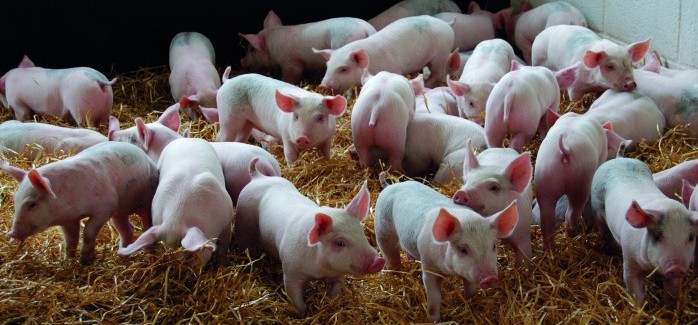AHDB is making progress in updating long outdated emissions factors in pig buildings in a project that could save some pig farmers thousands of pounds.
International agreements on air pollution have resulted in the UK farming industry being required to achieve a 16% reduction in ammonia emissions by 2030.
Yet, the pig ammonia emissions factors on which this reduction will be based are from studies over 20 years old. To redress these dated figures, AHDB’s Environment and Buildings team has a large project underway to measure emissions from different pig buildings in the UK.
The Environment Agency (EA) uses emissions factors (EFs) to assess the impact of permitted farms’ ammonia emissions on the environment. Natural England uses them in ammonia dispersion modelling as part of planning applications, while Defra uses them to estimate UK emissions of ammonia from pig production for annual reporting to the European Commission.
But there is little, or no, qualifying information (for example, growth and feed conversion) to help relate EFs to current commercial performance. This is because the techniques used were limited, and measurements followed no common protocol, meaning direct comparison of values can’t be made.
AHDB has taken a major step towards ensuring accurate information is used to assess the environmental impact of ammonia emissions from pigs, with trials underway across a range of different production systems.
AHDB’s Zanita Markham, environment and buildings KT officer, said: “In our initial trials, we measured ammonia emissions from one straw-based and one fully slatted finisher farm, focusing on ammonia concentration in the inlet and exhaust air, using a bespoke analyser.
“In addition, the number of pigs, weights, feed intake, protein content of diets, ventilation rates, external and internal temperature and relative humidity were also recorded, as per an internationally recognised, standardised protocol from VERA (designed to provide reliable and comparable information on the performance of a range of environmental technologies for livestock production). This means that results from different studies can be compared and systems benchmarked.”
Indicative trial data so far suggests EFs – expressed as kilograms of ammonia per animal place per year – are generally lower than they were 20 years ago.
Figures from the initial trial, for finishers on slats, showed an average of 1.72kg of ammonia per animal place per year, compared with the current EF of 3.1kg.
Finishers on straw averaged 1.22kg of ammonia per animal place per year, compared with the current EF of 2.97kg.
As these were single-site measurements, this work is now being replicated across more sites and systems before the results can be applied more widely.
This includes free-farrowing solid-floor systems, weaners on solid floor, finishers on solid floor, finishers on fully slatted floor, dry sows on solid floor and straw-based finishers.
Miss Markham added: “These results have given us the confidence to develop an accelerated programme of monitoring so the industry can work from a better baseline.”
AHDB is in regular contact with the EA as it updates the national EFs and best available techniques (BATs), and is providing updates to maximise the time the agency has to manage particular problem areas.
This is particularly relevant as changes to the Environmental Permitting Regulations (EPR) include limits on emissions levels for ammonia, nitrogen and phosphorus.
This means that permitted farms will have to ensure their emissions do not exceed set limits and will be required to adopt minimum standards of management practice and BAT.
AHDB’s ammonia monitoring programme is expected to demonstrate, in time for the compliance deadline in February 2021, that a lot of existing pig housing will already be compliant.
It should therefore prevent producers incurring unnecessary expense in complying with the regulation, AHDB said.




